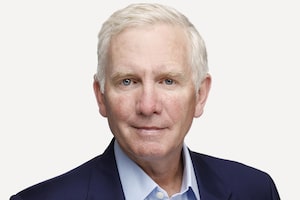Public-health nurse Suzanne Brewer administers the H1N1 influenza vaccine to health-care workers at the Dr. Everett Chalmers Hospital in Fredericton on Monday, October 26, 2009.David Smith
Stories from around the world scream out that H1N1 is a pandemic.
An emergency, Barack Obama says.
Ottawa is spending millions on ads designed to get us to take more precautions, including getting vaccinated.
Yet it's pretty clear that many Canadians don't share that anxiety.
From the work I've done over the years, this isn't shocking. It takes an awful lot to get Canadians into a state of high anxiety about this type of risk.
Lyme disease and West Nile spawned lots of coverage, much less fear. As fears of avian flu swept the world, most Canadians were not indifferent, but not terribly preoccupied.
When a handful of cases of BSE showed up in Canada, the typical Canadian response was to assume the best, and plan for the best. We took it on faith that these were isolated cases, and our food supply was safe.
SARS was an outlier in this pattern, in my estimation because it looked like the disease had compromised our ability to keep health care facilities safe.
At the end of the day, when we are talking about risk, there seem to be two factors that determine our level of dread.
The first is our level of confidence that our prevention systems will limit the scale of the risk.
The second is whether we have confidence that once a large scale problem exists, that our health facilities and personnel will be able to limit the severity and ease the suffering and harm.
For the most part, we live confident that we have extraordinary competencies and infrastructure to meet both these tests. This can be both blessing and curse. For organizations that need to condition people to take measures to protect themselves, our confidence in the system makes us tune out some warnings.
The situation with H1N1 is a reflection of a couple of fascinating things.
First, news of a dreadful disease spreads far more rapidly than the disease itself, in our digital, 24/7 information marketplace. For months and months we've been hearing about this phenomenon, and for many people, there has to date been little local or personal evidence of the disease. This reinforces the belief (misplaced?) that we are successfully preventing its spread.
Second, news coverage and political discourse about a major health risk like H1N1 tends to focus on the most severe, awful, and unprecedented, and this characterization feels at odds with what most people seen of H1N1 first hand. Lots of people think this is little worse than what millions of Canadians cope with every year.
In other words, the experience of H1N1 is that it is spreading less widely, more slowly, and with less severity than predicted. The result seems to be a remarkable calm, and possibly a dangerous disconnect between health experts and average Canadians.
 Bruce Anderson
Bruce Anderson